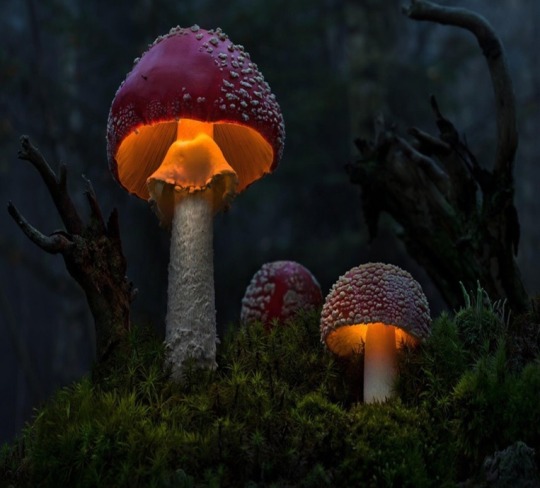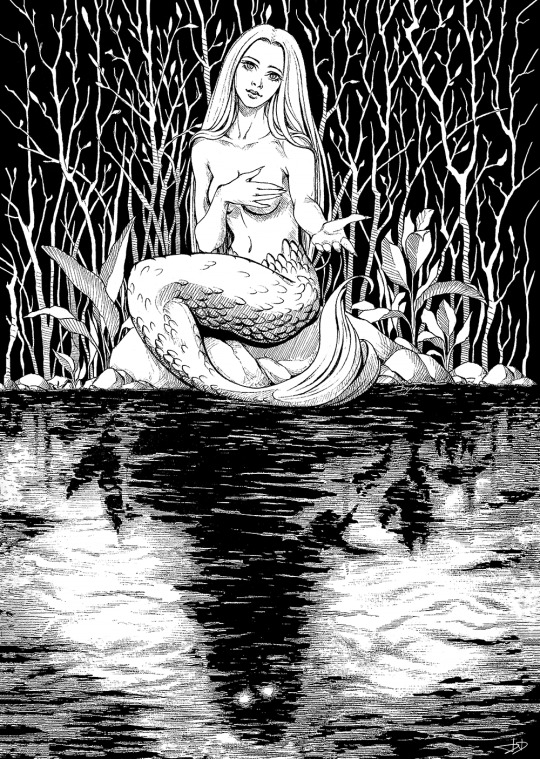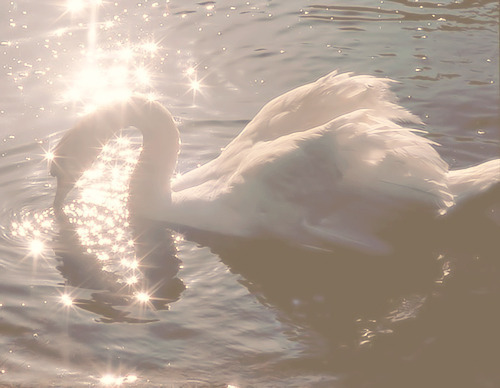Text

Henry Clarke - Moyra Swan Wearing a Dress from Irene Gilbert (Vogue UK 1968)
314 notes
·
View notes
Text




La Belle et la Bête (1946) dir. Jean Cocteau
873 notes
·
View notes
Photo

- Shirley Jackson, We Have Always Lived in the Castle
15K notes
·
View notes
Photo
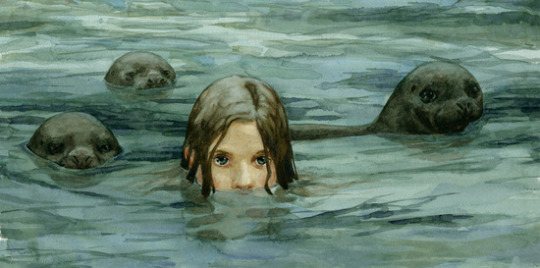
“The Selkie” by Jessica Shirley
Available as art prints at Society6
Art Print
Framed Art Print
Canvas Print
Amorous, affectionate and affable, Selkies are the hidden gems of sea mythology. Gentle souls who prefer dancing in the moonlight over luring sailors to their death, Selkies are often overlooked by mythological enthusiasts for the more enthralling forms of mermaids or sirens. Yet Selkies play a prominent role in the mythology of Scandinavia, Scotland and Ireland. Their myths are romantic tragedies, a common theme for land/sea romances, however it is the Selkies who suffer rather than their human lovers and spouses. While the tales of Selkies always begin with a warm and peaceful “once upon a time”, there are no true happy ending for the tales of Selkies—someone always gets his/her heart broken.
The mythology of selkies is similar to that of the Japanese swan maidens, though historically it appears that the tales of the swan maidens predate the western tradition. Selkies can be either men or women, but are seals while in the water. What differentiates them from mermaids (aside from the choice of animal) is that they undergo a full body transformation upon coming to shore: they do not merely transform seal tails into human legs, but rather completely shapeshift from the sea animals into a human. This is accomplished by shedding their seal-skin when they come to land. Selkies are predominately mythological creatures from Irish, Scottish (particularly in Orkney and the Shetland Islands) and Faroese folklore, however there is a similar tradition in Iceland as well.
Their name descends from the Scottish selich, and there does not appear to be a Gaelic term for these creatures. This is likely indicative of their prominence in early modern Scottish culture. It is believed that the Selkies arose in legends when early Scottish settlers and shipwrecked Spaniards married dark-haired, fur-wearing Finnish and Saami native women.
Described as incredibly handsome and beautiful, Selkies take the role of both predator and prey. Those who willingly come to land often seek those who are already dissatisfied in their daily lives such as the wives of fisherman. It appears more common in myths that the “predator” Selkies are usually the males, as tales indicate the men more often seek out lonely humans; however, there are also variations in which human women choose to summon male Selkies to the shore by sending seven tears to the sea. Selkies can only remain in the presence of humans for a short period of time, and then must commonly wait seven years to return the shore. That rule is broken, however, when a Selkie is forced to remain a human without his/her consent. The other way in which Selkies become part of human life is when their seal skin is stolen. These tales most often occur to female Selkies, creating the role of “prey” as mentioned above. It is not uncommon in myths for Selkies to come ashore and transform into humans for pleasure, and it is often during this time (when the skin is left unattended) that human men steal the female’s skin.
Once a Selkie is no longer in possession of his/her skin, the Selkie is under the hold of the human—most often depicted as a forced marriage. Interestingly, Selkie women are very good wives, but regardless of how happy a Selkie is on land, or how many children he/she beget during their time on the surface, once a Selkie recovers his/her lost skin, the Selkie immediately returns to the sea without looking back. Ironically, various tales also depict the half human children accidentally finding their parent’s lost skin and returning it without being aware of the repercussions.
One rather uncommon tale of Selkies reveals what happens if a Selkie chooses to return to the sea. It appears, according to one tale from the Faroe Islands, that upon making this choice, the Selkie is not able to return to his/her former life even if the Selkie wanted to. An abridged version of this tale describes a human husband sailing into a treacherous storm, saved only when his Selkie wife retrieves her skin and rescues him as a seal from certain death. Though this tale indicates a real love between the Selkie wife and her human husband, her donning of her seal skin will prevent her from ever taking part in the human world again. This is only one variation, of course, and thus is contradicted by other mythologies, however it is pertinent to the tale of Selkies because it reveals that all human/Selkie marriages are not hollow.
Selkies are far tamer and much more gentile than their mermaid and siren counterparts, and it is likely this is because those cultures who believed in Selkies lived very close to the sea and, in a way, the edges of the world. To these cultures, the sea was both wild and bountiful at the same time. It is not unreasonable to assume that the nature of the Selkies has remained tame throughout their legends because the sea was a source of survival for the Scandinavians and Scotsmen who believed in them. While Selkies are less prominent in cultural traditions today, they should be valued for their preference to love rather than harm humans. It is more pleasant to image a Selkie mother watching over her human children from the sea, than a seductive mermaid planning her next underwater vanquish. source
4K notes
·
View notes
Photo



I was hoping for something a little more helpful…
The X Files | 5.10 | Chinga
6K notes
·
View notes
Text








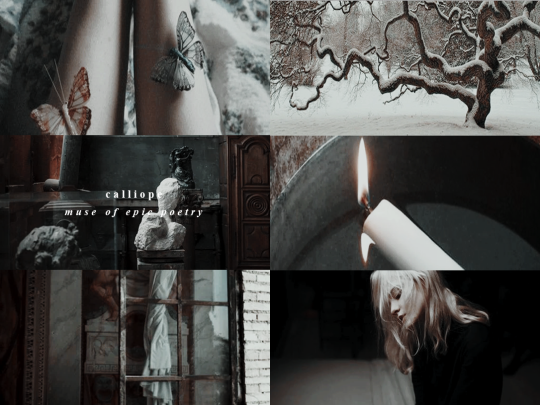
myth: the nine muses
in ancient greek religion and mythology, the muses are the inspirational goddesses of literature, science, and the arts. they were considered the source of the knowledge embodied in the poetry, lyric songs, and myths that were related orally for centuries in ancient greek culture.
279 notes
·
View notes
Text









myth: the nine muses
in ancient greek religion and mythology, the muses are the inspirational goddesses of literature, science, and the arts. they were considered the source of the knowledge embodied in the poetry, lyric songs, and myths that were related orally for centuries in ancient greek culture.
279 notes
·
View notes
Text
The person I reblogged this from is awesome as fuck.
211K notes
·
View notes
Text
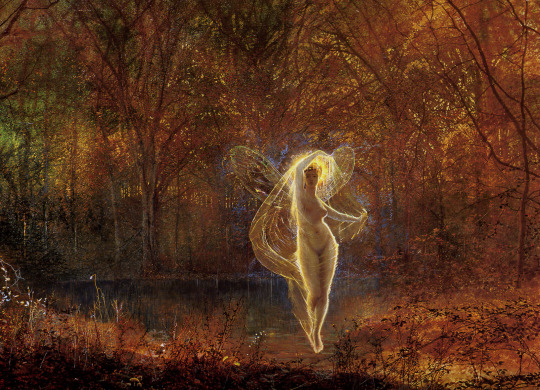
Dame Autumn has a mournful face by John Atkinson Grimshaw (1836 - 1893)
3K notes
·
View notes
Photo

Past the humming highway, there’s a vast and lonely dark.
37K notes
·
View notes
